The quest for the meat with the highest protein source is a frequently debated topic.
Apart from being a dedicated carnivore, I’m also an avid gym-goer. My bodybuilding fitness routine always has me maximizing the protein amount I eat pre and post-workout to bulk up well.
But which meat tops the list with the highest protein?
To answer this question, I consulted with leading experts, scrutinized reputable sources, and drew my wealth of experience with a diverse clientele.
In this comprehensive guide, I’ll unveil the ten healthiest types of meat, discussing which packs the most protein punch.
Quick Summary
- Chicken breast has the most protein compared to all types of meat, with 30.9g of protein per 100g/3.5 ounces. However, be aware of chicken that has been pumped with water, a process known as chicken plumping.
- Meat is a rich source of high-quality protein, Vitamin B12, and iron.
- Not all meats are equally beneficial. Ultra-processed deli meats are high in chemicals, preservatives, additives, and sal
10 High Protein Types Of Meat
To add high-protein foods to your meal plans, consider trying these ten meat types with the highest protein and amino acid content.
Always buy meat from trusted sources if you’re looking for healthy protein options. I’ve been ordering mine from ButcherBox, which offers 100% sustainably sourced cuts that are hormone- and antibiotic-free.
1. Chicken Breast
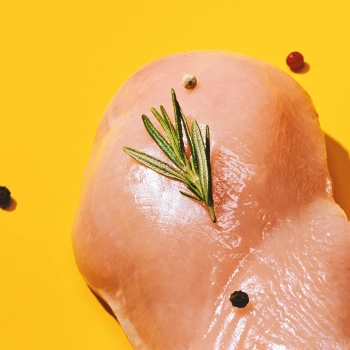
With different cuts such as breasts, wings, drumsticks, and thighs, chicken is a good protein source famous among fitness fanatics. Its high protein and low saturated fat content help build muscle and lose fat.
Because chicken has different cuts, the various parts also have different protein content.
One chicken wing has 6.5 grams of protein per 100g chicken thigh. One chicken breast contains 55g of protein, equivalent to 32g per 100g meat breast. As for the chicken drumstick, you get 14g of protein or 27g per 100g of meat [1].
It's worth noting that cooking skinless chicken breast could reduce the amount of protein or fat you eat.
Now, depending on your healthy eating or fitness goals, you might want to go with the cut that gives you more protein and saturated fat per serving.
2. Turkey Breast

Delicious roasted turkey breast gives you about 29g per 100g serving size, more than ½ of the daily value (DV) recommended protein for an adult.
To get the most protein, add extra turkey slices to your meals. This also helps to maintain a healthy weight through a balanced diet.
The lean protein in ground turkey helps us feel fuller for longer and also helps repair torn muscles after an intense workout.
Also Read: Is Turkey Healthy?
3. Pork Chops
For every 100g of baked or grilled pork chops, you get a decent 24g of proteins. 4 ounces of lean pork chops with bones contain roughly 23.8g of protein, while boneless ground pork chops of the same serving give you about 30.7g of the same.
Because pork meat has a lot of fat, I recommend cooking with the least amount of oil or, better yet, slightly fat spray your baking sheet or skillet before cooking.
4. Tuna

Tuna is one such protein load, with 100g giving you 29g of enough protein with fewer calories and fat levels, lowering your saturated fat intake.
As a fatty fish, 3 ounces of tuna serves you roughly 20g of tuna protein, which is great for building muscle.
Tuna is also rich in healthy omega-3 fatty acids and vitamins such as A and B. If you’re using canned tuna, always read the labels to find out how much protein is in each serving can.
5. Beef Skirt Steak
Skirt steak, cut from muscles around the diaphragm region, gives you roughly 26.1 g per 100g of lean beef serving, which translates to about 2.5g per 1g of steak [2].
If you're looking for a nutrient-packed and flavor-dense bite, roast beef skirt steak is the way to go.
Since it's cut from a working muscle, it can be a tough piece of meat, which is why it would help if you cut it against the grain to break down those hard meat fibers.
6. Liver
As nutrient-dense meat, a 100g beef liver contains roughly 180 calories, including more minerals and vitamins than other steak cuts.
This dark meat is also low in fats, with roughly 25 percent of the liver calories coming from fat compared to 60 percent fat level in other meats.
Eating a sizable liver amount has a satiating effect.
7. Shrimp
Shrimp is heavy in protein and low in carbohydrates, with fewer calories and fat. Cooked shrimp has 13g of protein and just 61 calories in three ounces (86 grams).
Apart from protein, it contains loads of choline, vitamin B12, zinc, and niacin.
8. Dried Fish
Dried fish is a rich protein source with a lower calorie count than other meals like steak. 100g of dried fish meat has around 79% protein and 290 calories.
One ounce of dried fish can give you about 19g of protein. It's also a rich source of zinc, calcium, and selenium [3].
9. Beef Jerky
If you want a healthy, nutritious paleo diet snack, lean ground beef jerky is your best serve as it has excellent protein and fewer carbs and fat. One ounce of ground beef jerky gives you 9.5g of protein and about 100g of calories.
10. Elk
Elk is a better beef as it's packed with all the suitable proteins your body needs. You can easily get 23g of protein from a 3-ounce elk serving size.
This is the healthiest cooked meat choice if you want to maintain a healthy weight throughout your fitness journey.
Meat As a Good Protein Source
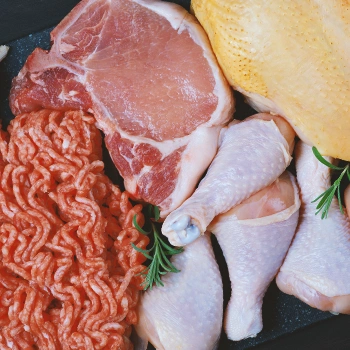
Protein is found in almost every other part of the human body, including bone, muscle, and skin.
It is the building block of enzymes, which fuel several chemical reactions, and animal foods, particularly meat, are a good source of this protein.
Meat has complete protein content because it serves all the essential amino acids you need for good health. Complete proteins in meat are also natural, so no protein supplements or boosters are required to produce them.
High-quality protein, such as meat and poultry, has been demonstrated to have more health benefits than other protein diets in preventing muscle loss as we age.
Besides high protein, meat also has heme iron, which prevents anemia because your body absorbs it better than non-heme iron in plants and vegetables [4].
The Amount of Meat Protein You Really Need

The Dietary Reference Intake (DRI) for more lean protein requirements is 0.36g/pound or 0.8g/kg of body mass [4]. Highly experienced gym-goers may gain from additional animal proteins (more than 3g/kg each day).
However, approximately 2g protein per 1kg daily is adequate for your muscle growth if you're starting.
“Protein consumption varies depending on gender, age, and exercise levels, but we need at least 10% energy from protein.”
- Rose Carr, Senior Nutritionist
A high-protein diet can help you lose weight by decreasing your appetite and improving your satiety.
You can estimate your high-protein food consumption in two ways:
- Specify a percentage of your overall caloric intake
- Get a precise quantity of grams of your daily protein intake
4 Ways To Increase Your Meat Protein Intake

Here’s how you can maximize the amount of protein and get the right amount of amino acids:
- Add protein to your meal plans: Don't wait until dinner to start consuming protein. Include processed meats in your other meals during the day. If you can, try snacking on protein-packed foods from time to time.
- Consume your protein first: Eat the meat protein first, particularly before the carbs, when enjoying a meal. Protein stimulates the synthesis of peptide YY (PYY), a stomach hormone that promotes feelings of fullness and satisfaction [6].
- Prepare your meat in advance: You have to plan ahead of time so that you have meat within reach to make an easy snack. Get quality meat that you can pre-cook and refrigerate. This could be a great and easy addition to your veggie-pumpkin seeds salad, rice, and other whole grains.
- Increase meat portion per serving: Eating more protein gives you enough to last throughout the day. Ensure you don't overeat it to avoid overworking your metabolism since it can cause you to absorb less amino acids.
Related Articles:
FAQs
Which Meat is the Healthiest?
The healthiest meat is the liver. Particularly beef liver.
What Is the Best Meat for Building Muscle?
The best meat for building muscle is lean protein sources like chicken, turkey, and pork chops. They aid muscle growth due to their high protein content and essential amino acids. Red meat, such as beef, may also help but should be consumed in moderation due to its fat content.
How Can I Get 75 Grams of Meat Protein Per Day?
You can get 75 grams of meat protein per day if you consume proteins from different sources.
Why Do Bodybuilders Eat Chicken Instead of Beef?
Bodybuilders eat chicken instead of beef because it's leaner and packed with protein, which aids muscle growth and repair. Its lower fat content may help achieve the desired physique without excess calories.
How Can I Absorb More Meat Proteins?
You can absorb more meat proteins by eating acidic foods, such as grapes, blueberries, and lemons.
What Happens If You Eat Too Much Protein?
When you eat too much meat protein, the excess is stored as fats.
References:
- https://nutritiondata.self.com/facts/poultry-products/746/2
- https://fdc.nal.usda.gov/fdc-app.html#/food-details/171787/nutrients
- https://www.tandfonline.com/doi/abs/10.1080/87559129.2020.1737708
- https://www.ncbi.nlm.nih.gov/pmc/articles/PMC3583546/
- https://www.healthline.com/nutrition/how-much-protein-per-day
- https://pubmed.ncbi.nlm.nih.gov/30678628/



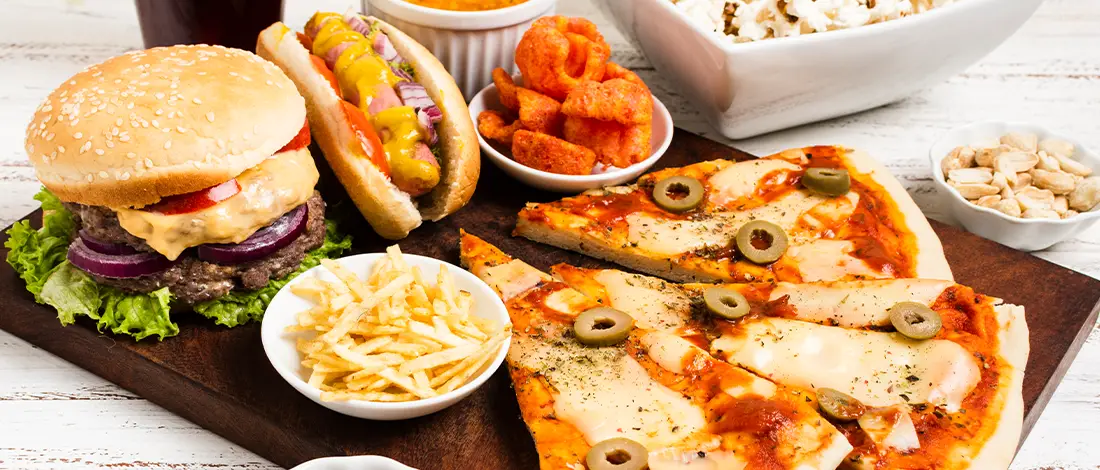
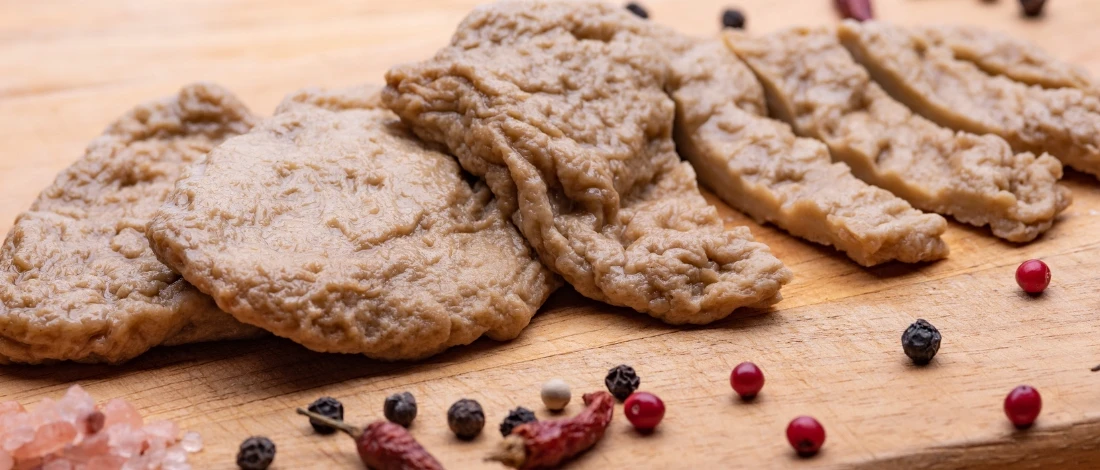
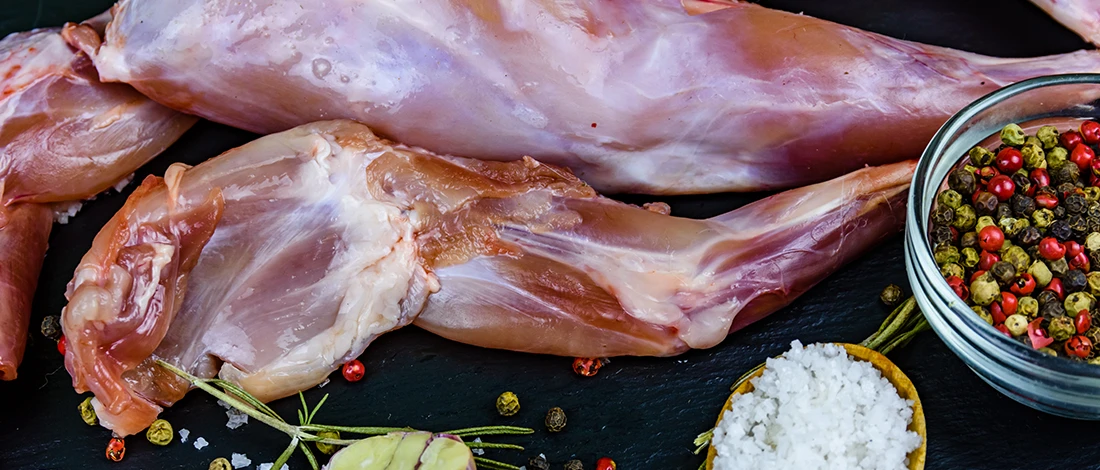

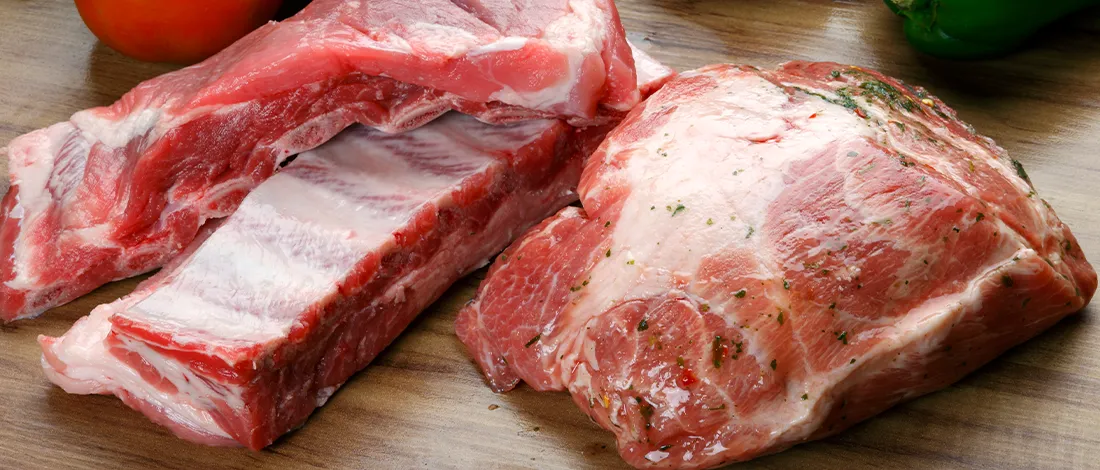

Does the protein content change when you cook the meat, or is it pretty stable across cooking methods?